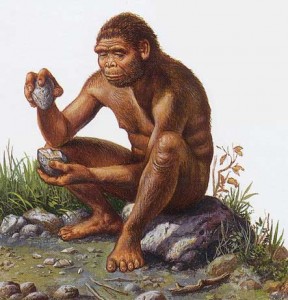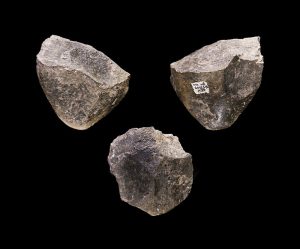Humans have been influencing climate change on a global scale since the late 19th century, but it has only recently become a major concern to the general population. That being said, even with drastic efforts being made to counteract global warming, data displayed by PNAS.org predicts that global temperatures will continue to rise from +2.6 to + 4.8 °C by the end of the 21st century. Not only does this affect the narratives of the present, however, but new discoveries also reveal that the climate change crisis is affecting the narratives of the past.
Million Metric Tons of Carbon in the atmosphere vs. year. Graph by Boden, T.A., G. Marland, and R.J. Andres 2017Throughout the planet, temperatures are oscillating at unnatural paces. Two results from these fluctuations are flash floods and droughts in environments unprepared for such disasters. Unfortunately, archeology is heavily affected by these events: an example being the Mississippi River basin. Due to heavy flooding occurring two and a half years ago along with a present-day drought, artifacts in the Mississippi River basin are being greatly disturbed. This disturbance destroys context vital for archeologists to make proper assumptions about the past. ScientificAmerican.com quotes, “Archaeological sites do best either staying underwater water or staying on dry ground. Going back and forth is not good” (Charles McGimsey, the Louisiana state archaeologist).
Nevertheless, data discovered through archeology may be the key to preserving archeology in the future. Though humans have only been affecting climate change for the past 250 years, humans have always been experiencing climate change. It is through archeological records that scientists can see how humans have dealt with changes in the climate in the past and try to apply that data to the present efforts to stop day global warming. Climate modelers and earth scientists are teaming up with archaeologists using paleoclimate and archaeological records to help evaluate the coming climate dangers to develop a sustainable answer
Climate change is a more pressing issue now than it ever has been. For the first time in history, both humanity’s past and future are at risk. The successful efforts made by archaeologists today to help counteract global warming beautifully display the importance of preserving the past. If climate change is left unchecked, lessons learned in the past may be forever lost.
References:
Burke, Ariane. “The Archaeology of Climate Change: The Case for Cultural Diversity | PNAS.” PNAS , https://www.pnas.org/doi/10.1073/pnas.2108537118.
Cusick, Daniel. “Climate Change Is Adding Urgency to Archaeology.” Scientific American, Scientific American, 31 Oct. 2022, https://www.scientificamerican.com/article/climate-change-is-adding-urgency-to-archaeology/.
“North Carolina Office of State Archaeology.” Predicting Effects of Climate Change on Archaeological Sites | NC Archaeology, https://archaeology.ncdcr.gov/programs/research/climate-change/predicting-effects.
Further Reading:
“Climate Change (U.S. National Park Service).” National Parks Service, U.S. Department of the Interior, 5 Oct. 2021, https://www.nps.gov/subjects/climatechange/index.htm.
“Using Archeology to Better Understand Climate Change.” UdeMNouvelles, 12 May 2022, https://nouvelles.umontreal.ca/en/article/2021/07/20/using-archeology-to-better-understand-climate-change/.




